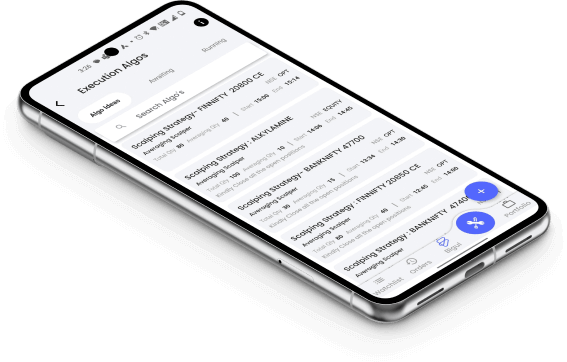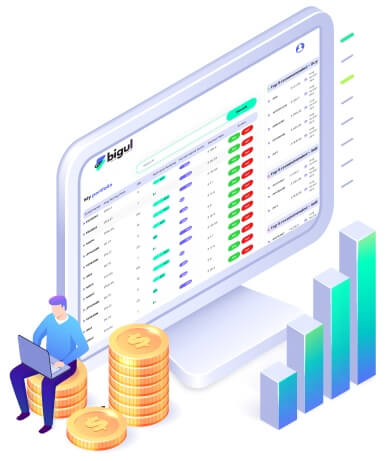Open an Account & Start Algo Trading Today!
- Flat Rs 18 brokerage
- No Cost Algo Trading
- Trade from Chart
- 30+ Indicators
- Stock SIP
- Smart Case
- Bigul Option Chain
- 300+ Pre Defined Market Watch
- IPOs
- Basket Order
Advantages and Disadvantages of Investing In Equity-Linked Schemes
ELSS is a type of
fund that draws its returns from the equity market. ELSS is one of the most
popular investment instruments, and it has a mandatory lock-in period of three
years. During this time, the investors cannot withdraw the amount they
invested. However, ELSS is a tax-saving instrument that may get a tax exemption
of Rs 1.50 lakh under section 80 of the Income Tax Act.
To start investing
in the ELSS funds, investors had two choices - Lump Sum or SIP.
In Lump Sum
investors can invest the capital by making a one time payment, whereas in SIP,
investors have to make the fixed payment on a selected interval of time.
Advantages of Equity Link Savings Schemes (ELSS)
Taxation benefits
There prevails a sufficient amount of tax benefits that ELSS funds offer under Section 80C of the Income Tax Act. The investors are provided with the privilege of availing a deduction up to Rs 1.5 lakh per financial year, hence reducing the respective taxable income. Returns and capital gains from ELSS are also fairly tax-efficient. While such gains up to Rs 1 lakh in a financial year are exempt from tax, the gains above that limit are taxed at 10%. In other words, while offering a tax-saving avenue along with a possibility of higher returns in a relatively short period, ELSS funds have a lock-in period of just three years.
Short Lock-in Period
The lock-in period for ELSS funds is the shortest, being three years,
and this assures relatively better liquidity compared to options such as Public
Provident Fund or National Savings Certificate. Equally oriented, the returns
from ELSS funds stand to be much better in comparison with traditional
tax-saving avenues such as fixed deposits or bonds, especially over the long
term.
Diversification
An investment in
ELSS funds is normally made across sectors and market capitalization in a
well-diversified portfolio that provides a good spread of risk and, therefore,
returns. The diversification ability of the ELSS fund becomes very crucial with
regard to managing risks while aiming for higher returns.
Large-cap, mid-cap, and small-cap stocks from a variety of industries and businesses would be invested in by such schemes. A straightforward allocation of investments across markets and industries could be considered diversification, with the goal of minimizing reliance on the underwhelming performance of any one stock or industry. This kind of balanced approach undoubtedly increases returns while lowering the overall risk of stock investing.
Systematic Investment Option
An investor can invest in ELSS
through a SIP, whereby he may stagger his investment over a certain period of
time. Thus, he shall benefit from rupee cost averaging and, therefore, lower
volatility in the market. In fact, the SIP option in these funds has a number
of plus points that make it the most viable alternative for investors. With a
fixed sum to be invested at periodic intervals, SIPs allow investors to stagger
investments over time. Basically, the average cost of rupees aids in cushioning
market volatility. This not only reduces the possibility of incorrect timing of
the market, but also spreads out units purchased at different levels of the
market.
Disadvantages of Equity Linked Savings Schemes
Market Risk: Equity-oriented schemes are more prone to market turbulence or volatility; hence, holding for a short term during adversity in the market results in losses. This relates directly to market performance because most of the ELSS assets are equity-based. The slowdown in economic growth, political disturbance, fluctuation in interest rate, or any international event creates volatility in share markets and thereby results in a change in NAV.
In this case, as
much as ELSS funds have the potential for returns at par with a high-level
investment, they also stand to be always exposed to the inherent uncertainties
of the market. This can most frequently result in a pretty high chance of
negative returns, especially in the short-term period, and therefore, they
would suit a client with a long-term horizon and a good risk tolerance.
Lock-in Period: They maintain a
three-year lock-in requirement whereby no amounts may be withdrawn within this
tenure. Compared to any other equity investment, liquidity is limited.
No assured returns,
unlike the other traditional tax-saving devices like PPF or fixed deposits. The
performance linkage to the stock market is direct. While fixed-income
instruments like PPF or fixed deposits-offer assured returns, their equity-linked
counterparts, ELSS funds, will vary substantially in performance given the
dynamics of the market, general economy, and company-specific factors. This
means that returns for the ELSS funds are positively correlated with the
underlying equity market performance and are not guaranteed to be positive.
Investors should be prepared for possible volatility and lower or negative
returns, more so in the short term, and as such, ELSS funds are best suited for
those with a long-term investment horizon.
Long-term Commitment: Though the lock-in period is three years, to fully accredited from the ELSS funds, sometimes investors need to stay invested for a longer duration, which may not be suitable for those investors who are seeking returns quickly.
Conclusion
Equity linked saving schemes are funds that generate returns from the equity market. Investors can invest in ELSS for various benefits such as tax benefits, higher returns.
Also Read:

Download Bigul Trading App!
Supercharge your trading on the go with the Bigul Trading App! Download now for instant access to cutting-edge features, real-time insights, and unparalleled convenience.













